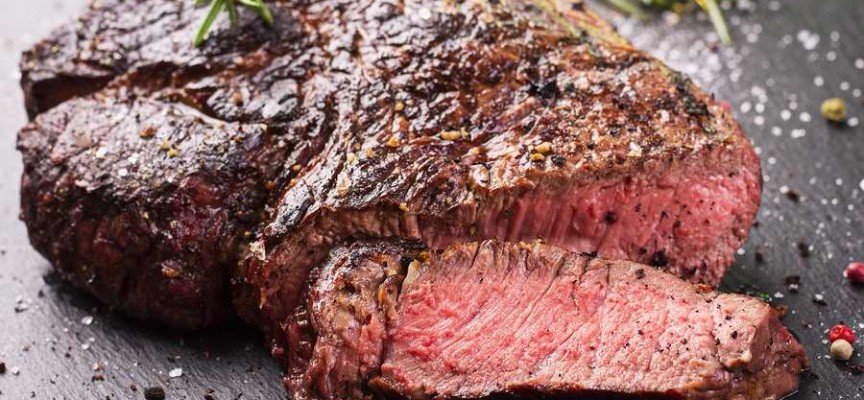We have been told over and over that red meat is bad for the heart. The saturated fats in red meat are considered to be a contributing factor to high blood pressure. Now, after hearing all the bad press about beef and other red meats, what if someone told you that you can keep your blood pressure under control and also eat beef. A little skepticism is understandable but you shouldn’t dismiss it outright. According to a recent research by nutrition scientists at the Penn State University, a diet comprising of vegetables, fruits and lean beef as the primary protein source, can help lower blood pressure.
One could say, why fuss about this, just give up red meat. Let’s face it! We love to eat delicious kababs, mouthwatering nihari and many other delights like these. What would be life like without great food? Fortunately, we have a better choice, thanks to the researchers at Penn state.
“This research adds to the significant evidence, including work previously done in our lab, that supports lean beef’s role in a heart-healthy diet,” said Penny M. Kris-Etherton, Professor of Nutrition at Penn State. “This study shows that nutrient-rich lean beef can be included as part of a heart-healthy diet that reduces blood pressure, which can help lower the risk for cardiovascular disease.”
How Does this Work?
You might have heard about the DASH (Dietary Approaches to Stop Hypertension) diet for high blood pressure patients. The DASH diet comprises of fruits, vegetables, low-fat dairy and protein from plant sources (primarily). The researchers at Penn tested a similar diet (BOLD and BOLD+) on a group of 36 people between the ages of 30 and 65. The participants of the study were given four different types of diets over a period of approximately 24 weeks. The diets included normal healthy American diet, DASH Diet, BOLD and BOLD+. The researchers concluded that BOLD+ diet was the most effective in reducing blood pressure.
“This evidence suggests that it is the total protein intake — not the type of protein — that is instrumental in reducing blood pressure, as part of a DASH-like dietary pattern.” said the researchers.
What’s the Big Deal about Blood Pressure?
Well, simply put, high blood pressure increases the risk of heart diseases two to four times. So, how high is high? According to the current recommendations of the American Heart Association, readings below 120/80 are considered normal. Your doctor might be telling you a different threshold but it is better to stick with this recommendation to be on the safe side.
What Can You do to be Safe?
There are a few lifestyle changes that can help you remain safe.
Limit salt intake: Go easy on salt because salt causes your body to retain water, which increases the volume of blood that needs to circulate and consequently blood pressure rises.
Lose the belly: Everywhere you look, you see people walking around with bulging bellies of different sizes. This has got to go. Fat around the midsection adds to the blood supply requirement and causes undue stress to the heart.
Get moving: This is perhaps the Achilles heel for most of us. Adults and even kids are found more on the couch than on the curb. Include moderate aerobic exercise into your daily routine. The best option is brisk walking, which can be done by people of any age. Squeezing a rubber ball for a couple of minutes, 3-4 times a day, also helps in reducing blood pressure.
Eat healthy meats: we hear a lot about the benefits of low-fat diets and often people go to extreme when following low-fat diets. The truth is that healthy fats are necessary for heart health so eat lean meat.
Reduce stress: Stress is body’s normal response to threatening situations but not the chronic stress, which has become an integral part of our lives. Stress raises blood pressure and if it lingers on too long, so does the elevated blood pressure. Find the things that relax you and make them a part of your daily routine. It could be gardening, reading, walking or any other hobby.
Know What Affects Blood Pressure Readings
It is not enough to go to doctor’s clinic and have blood pressure measured. There are several factors that affect blood pressure readings and your doctor may not pay attention to them.
- Bare your arm when having blood pressure measured. If measurement is taken over clothing, it can raise the readings and give you inaccurate information;
- Rest 10-15 minutes before taking measurement because it relaxes the blood vessels and gives a more accurate reading;
- Keep your arm raised to the heart level and have it rested on a desk or other flat surface;








To the gentleman Waseem, his BP seems high… one of the biggest risk of high blood pressure is having strokes… though the article mentioned reducing salt… we ned to be aware that sodium is in every processed food out there. One good habit is to get one self familiar… reading the levels to find out the amount of sodium on it. Many times small changes can make a huge difference. Please reconsidered your habits and take time to make small changes that would benefit your over all health.
Like this
My age is 46 my blood pressure is always between 100/180 im banker and I have no time for exercise im going hiking weekly based what suggestions about me.
May Allah grant you health. As I am not a medical practitioner, I can’t give you a medical advice. The best thing would be to consult a qualified physician. High blood pressure is a serious matter and should be properly treated through medication, diet and exercise.